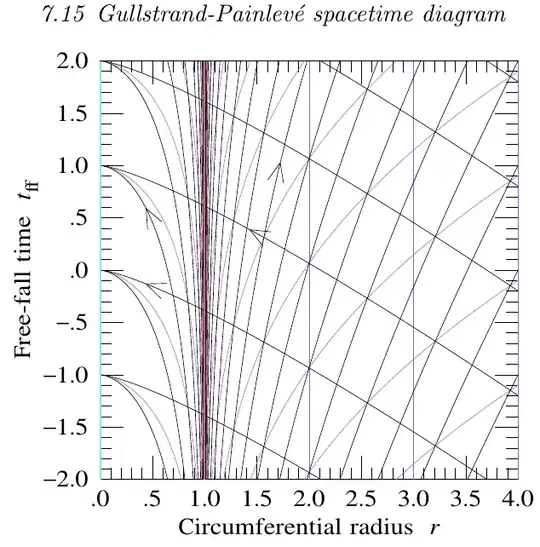There's a naive pop-sci explanation of Hawking radiation, where a particle-antiparticle pair is produced just inside the event horizon. The particle with positive energy tunnels out and escapes, while the one with negative energy falls in, so the black hole shrinks.
As appealing as this picture is, it seems to have no relation to the usual derivation in terms of Bogoliubov transformations. But about twenty years ago, Parikh and Wilczek came up with a tunneling interpretation of Hawking radiation that is very similar! The steps of the derivation are:
- a particle with positive energy is produced just inside the initial event horizon $r_i$
- this means the black hole is now smaller, so the new event horizon has a smaller radius $r_f$
- the particle tunnels inward to just outside the new event horizon; this is the part where you apply the WKB approximation to get the tunneling rate
- the particle escapes outward
In their own words:
Although this radially inward motion appears at first sight to be classically allowed, it is nevertheless a classically forbidden trajectory because the apparent horizon is itself contracting. Thus, the limits on the integral indicate that, over the course of the classically forbidden trajectory, the outgoing particle starts from $r_{\text{in}} = 2M − \epsilon$, just inside the initial position of the horizon, and traverses the contracting horizon to materialize at $r_{\text{out}} = 2(M − ω) + \epsilon$, just outside the final position of the horizon.
Everything else in the paper is just direct calculation, so this is really the crucial insight, but it's completely opaque to me. I basically don't understand a single aspect of it.
- Why should the particle start at $r_{\text{in}}$? Why does it get to start right at the initial horizon, instead of having to start further in?
- During the "tunneling" process, $r$ seems to decrease monotonically. Why would falling inward be classically forbidden?
- How exactly does the horizon contract? Does it gradually 'follow' the particle inward? Does it instantly shrink when the particle is produced? The paper is very vague on this.
- What triggers the particle production in the first place? Is it a pair production? If so, what happens to the other member of the pair?
I looked at papers citing this one, but all of them simply repeated the same calculation without much commentary. Does anybody have a physical picture of what's going on here?
